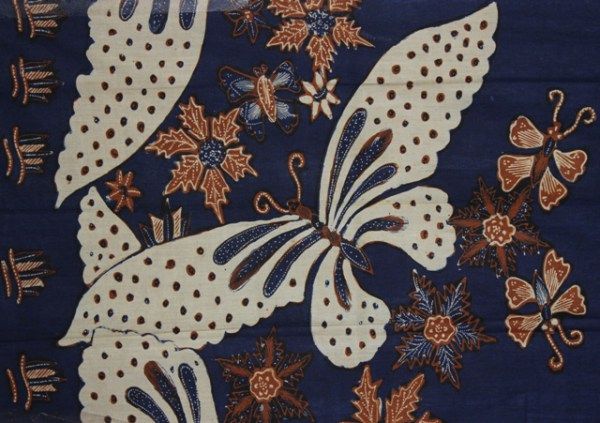Ciamis Batik is one of the batik products originating from the Ciamis district which is located in the shoutheast of West Java province, directly adjacent to Kuningan Regency and Majalengka Regency in the north, Banjar City, and Cilacap Regency (Central Java) in the east, Pangandaran, and Samudera Regencues. Indies in the south and Tasikmalaya in the west.
Ciamis City as the heir to the Galuh Kingdom has the nickname the Sweet City, which is a city that continues the authority of the Galuh Kingdom and is known to be safe, peaceful, fertile, and religious.
Not many people know that this city is the center of the Batik industry which developed rapidly during the Galuh kingdom until it became a hereditary tradition and created a beautiful batik culture.
History of Ciamis Batik Motifs
If we trace some other historical sources(the facts cannot be confirmed) stating that the batik culture began to develop after the Diponegoro’s troops left the city of Yogyakarta to go to Batavia in the context of the war against the Ducth colonials, and the city of Ciamis was one pf the routes that the group passed. Long story short, when the war ended the troops finally stopped in the city of Ciamis and some began to settle and those who were experts in batik began to revive batik activities as their daily work.
Around the 20th century, batik activities in the city of Ciamis began to develop slowly but surely into a mass product that could be obtained by people outside the Ciamis area. The glorious era of Ciamis batik lasted from 1960 to early 1980. At that time, Ciamis Batik was able to compete with the dominance of Solo BAtik, Jogja Batik, and Pekalongan Batik.
However, starting in the 1980 the ccompetitiveness of Ciamis Batik weakened due to macroeconomic changes that were very unfavorable to Ciamis batik artisans,
and the peak was the eruption of Mount Galunggung that occurred in 1982, resulting in the sun being barely visible for a year due to dust. volcanic eruptions that enveloped the Ciamis sky. It is clear that the craftsmen cannot dry their batik products properly because there is no sunlight.
Initially, Ciamis batik only had 2 colors, namely brown soga and black on a white background. This was because many were influenced by the interior batik as well as the limited natural dyes at that time, the types of colors presented were starting to develop due to the assimilation process with coastal batik.
Ciamis Batik Motifs
Ciamis batik is very different from other types of batik, namely the batik pattern is not too complicated and has a simple character. Ciamis batik motif is often referred to as Ciamis batik which represents the natural beauty of the city of Ciamis, so we are not surprised if the Ciamis batik motif raises a lot of rereng motifs or slopes or sloping cliffs (the motif that forms at a glance like a Javanese batik machete motif). Other batik motifs are kumali batik with the main ornaments in the form of four shapes that surround the core, and cupat manggu, a geometric motif depicting the mangosteen fruit.
Ciamis batik motifs in their simplicity are indirectly tied to the historical cultural roots of coastal decorations from Tasikmalaya batik, Garut batik, Indramayu batik, and Cirebon batik. In addition, the basic influence of the interior batik (Solo and Yogyakarta) helps in shaping the composition and color characteristics of the Ciamisan batik motif. The combination of coastal and inland forms a new batik culture in the social life of the Ciamis community giving birth to a variety of Ciamisan Batik motifs that are by the styles and tastes of the local community, namely simplicity in a combination of contemporary and contemporary but still looks elegant, so many often call it with sari batik.
The Ciamis Batik motif does not have a symbolic meaning, philosophy, noble value, or indicate a certain social status. The process of creating the motif emphasizes the impression of simplicity in a form that is inspired by the natural surroundings. Ciamis batik motifs that we may know are rereng lasem batik, rereng seno batik, machete batik suddenly, rereng sintung ageung batik, lepaan batik, broken coffee batik, damaged machete rereng batik, kumeli batik, sweet fighting rereng batik, parang alit rereng batik, batik rereng beard, batik rereng useup, and batik rereng peuteuy Papangkah.

Batik Ciamis motif rereng eneng is often worn for tops or clothes, while batik rereng seno is worn for batik subordinates. One of the characteristics of Ciamis batik is the coconut leaf plant and rent-seeking leaf plant. Rent-leaf plants are plants that grow in the ponds of ciamis residents.
Currently, Ciamis Batik, West Java, is starting to squirm again after a vacuum for approximately 28 years with four mainstay motifs characteristic of Ciamisan, such as ciung wanara, shark stones, parang sontak and galuh pakuan which are no less good than other city batiks.
When UNESCO gave recognition that batik is Indonesia’s cultural heritage, the Ciamis batik artisans began to be excited again to raise ciamis batik again. Batik artisans began to re-establish batik workshops that had long been closed due to competition in the market with batik printing. Sanggar Rukun Batik is one of the traditional batik craftsmen who began to re-produce Ciamis batik with 20 colleagues. Sanggar Rukun Batik also opens itself to become a learning space for ciamis young people so that ciamis batik culture is maintained and more loved by its people. You also need to know that the Ciamis batik center is located in Ciwahangan Hamlet, Imbanagara Ciamis Village.
Hopefully, it will inspire and add insight to all of us to always love Indonesian batik. And also keep in mind that batik printing is not batik because it does not meet the requirements of the batik elements in it.



Bibliography of Ciamis Batik Motif and Explanations
- FitInLine, Batik Ciamis.Online: https://goo.gl/cPs2a7 accessed at 24 November 2016
- Aris Wahyu, Sejarah Batik Ciamis. Online: https://goo.gl/WoRR1i accessed at 24 November 2016